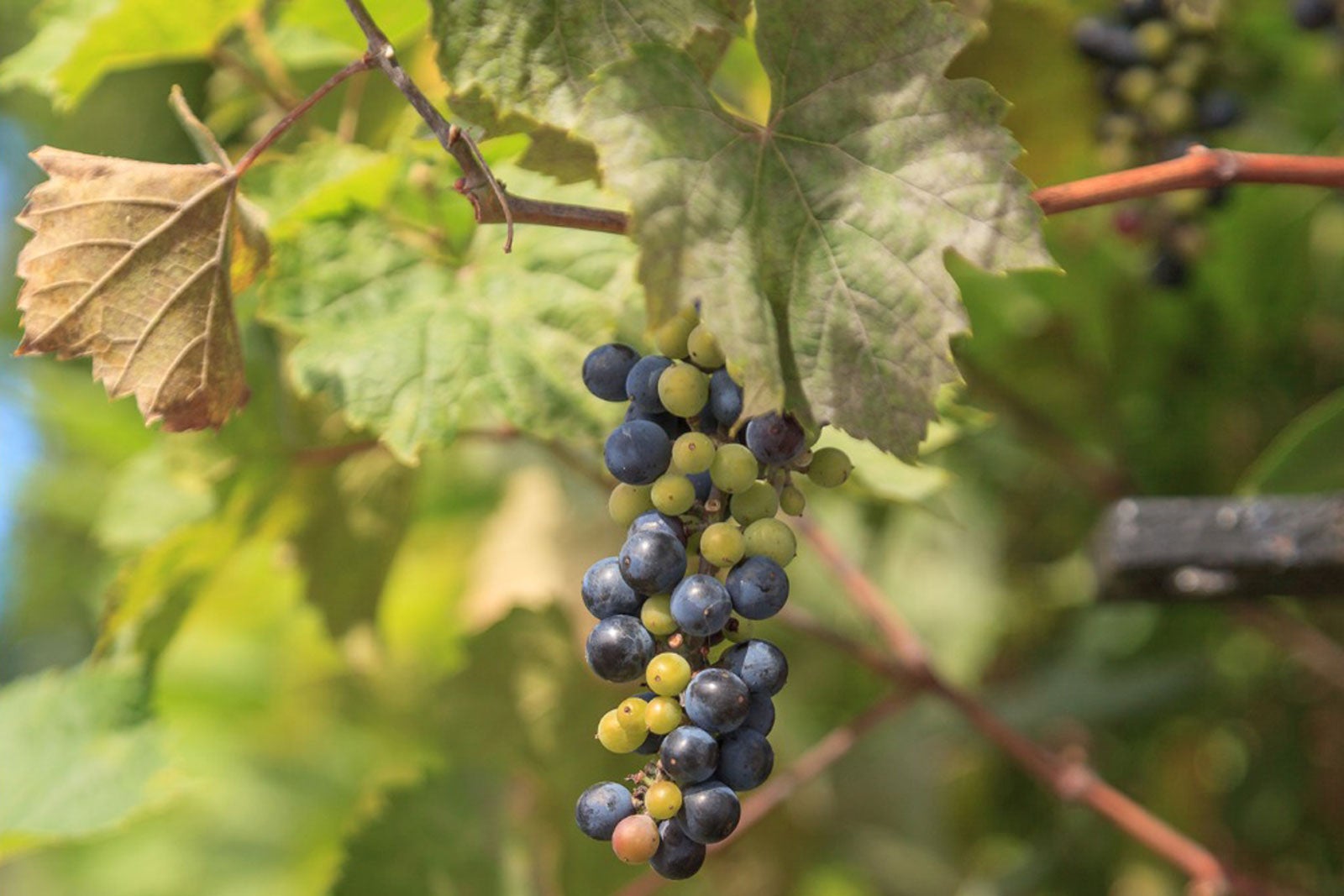
Grapes are cultivated for their delicious fruit used in winemaking, juices, and preserves, but how about wild grapes? What are wild grapes and are wild grapes edible? Where can you find wild grapes? Read on to find out more about wild grapes.
What are Wild Grapes?
Wild grapes are woody, deciduous vines just like cultivated grapes with a voracious growth habit. Some can reach up to 50 feet (15 m.) in length. They also have tenacious, woody root systems that can persist for years, one reason why some people refer to wild grapes as weeds.
Wild grapes use tendrils to anchor onto branches or other surfaces. Their bark is gray/brown and rather shredded looking. They tend to grow higher and thicker than their cultivated counterparts, yet another reason they are termed wild grape weeds since grown unchecked they can overtake other plant species.
Where Can You Find Wild Grapes?
There are dozens of wild grapes found throughout the continent, all of which have large, serrated, three-lobed leaves. Some of the most common wild grape species found in North America are fox grape (V. labrusca), summer grape (V. aestivalis), and riverbank grape (V. riparia). As their names suggest, wild grapes can be found along streams, ponds, roads, and in open woods clambering up trees.
They grow easily and are much less fettered with disease and pests than cultivated grape cultivars, making them quite prolific growers. Another reason they can be classified as wild grape weeds.
Are Wild Grapes Edible?
Yes, wild grapes are edible; however, be warned that eaten right off the vine they may be a bit tangy for some. The grapes taste better after the first frost but are still a bit on the sour side for many palates. They have seeds as well.
Wild grapes are great for juicing and they freeze very well if you don’t have time or the inclination to juice immediately. The juice makes excellent jelly. They can be cooked into dishes and the leaves are edible too. Known as ‘dolma,’ the leaves have long been used in Mediterranean cuisine, stuffed with rice, meat, and various spices.
Sign up for the Gardening Know How newsletter today and receive a free copy of our e-book "How to Grow Delicious Tomatoes".
Identifying Wild Grapes
While there are many species of wild grape, all look much the same but, unfortunately, so do many other native vines. Some of these “copy-cat” vines are edible but unpalatable, while others are poisonous, so identifying wild grapes correctly before ingesting them is of paramount importance.
When scouting for wild grapes, keep in mind that the plant has large, three-lobed leaves with veining that extends from the petiole, shredding bark, forked tendrils for climbing, and fruit that looks the same as cultivated grapes, albeit smaller.
There is another plant that looks almost exactly like wild grape, the Canadian moonseed, which is highly toxic. The differentiating factor here is that Canadian moonseed does NOT have forked tendrils or toothed leaves. Canadian moonseed has smooth foliage. Other plants to watch out for include porcelain berry, Virginia creeper, and pokeweed (which isn’t even a vine but when mixed into a dense thicket is hard to differentiate).
Porcelain berry has grape-like leaves, but berries are blue and white prior to ripening, not green like unripe grapes. Virginia creeper bears purple fruit in the fall, but the leaves are made up of five leaflets with red stems.

Amy Grant has been gardening for 30 years and writing for 15. A professional chef and caterer, Amy's area of expertise is culinary gardening.
